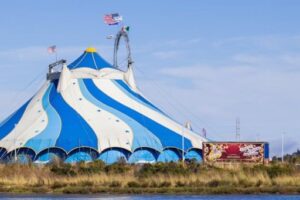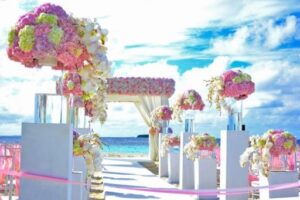The world-famous painter Henri Rousseau (1844-1910) was self-taught and had a concise career as an artist. However, he is generally remembered for the more than 25 so-called “Henri Rousseau Jungle Paintings,” and his fame is closely linked to these animal and nature paintings.
But there are also other famous Henri Rousseau paintings. His smaller depictions of Paris and its suburbs are just as renowned. According to him and some art historians, he started a new genre of portrait cityscapes. And he also created a few self-portraits, one of which is very famous.
This article will briefly tell you more about the painter Henri Rousseau’s life and discuss his self-portrait “I myself:

Table of Contents
The Painter Henri Rousseau – His Life
The painter Henri Rousseau (1844-1910) was born in France. Henri was mediocre in most of his high school subjects but won many prizes for drawing and music. After high school, he worked as a lawyer and started to study law. However, he didn’t complete his studies but joined the army in 1863.
When Rousseau’s father died in 1868, he left the army and moved to Paris to support his widowed mother. In 1868, he married his landlord’s daughter. They had nine children, of which eight died of tuberculosis. In 1871, he became the Collector of Taxes on goods entering Paris. After his first wife had died in 1888, he married Josephine Noury in 1898.
He started painting seriously in his early forties, and in the early 1890s, he retired from his tax collector’s job to work exclusively on his art. In August 1910, he was admitted with gangrene in his leg to a hospital in Paris. After an operation, he died on 2 September 1910.
Rousseau always said he only had nature as his teacher. Although he didn’t receive formal training as a painter, he received “advice” from Felix Auguste-Clement, Jean-Leon Gerome, and two established Academic painters. Because he was self-taught, Henri Rousseau’s art has always been considered by art historians as created by a naive or primitive painter.
“I Myself: Portrait–Landscape” – The Main Figure
Rousseau’s most famous self-portrait is the work exhibited at the Salon des Indépendants in Paris in 1890 under the title “I Myself: Portrait-Landscape.” Most art historians agree that this painting is not only one of the best Henri Rousseau paintings but is also proof of Rousseau’s ambition. Rousseau depicted himself as dominant on a neutral ground. He is triumphantly pictured in plain black, and it seems he has a solemn expression. No smile can be detected behind his beard.
The names of his wives, Clémence and Josephine, can be seen on the color palette he holds in his right hand. The two names symbolize that they were the inspiration for him to paint.
Interestingly, the names of the two ladies were added later by Rousseau. Although the portrait was completed in 1890, Rousseau later updated the work with additional details – mainly autobiographical details, like the names of his two wives. He also added a ribbon of the order of academic distinction to his lapel in 1901. The ribbon was added after he had become a drawing teacher at the Association Philotechnique.
He specifically presented himself with a brush and palette in hand while wearing a suit and the traditional artist’s beret. With this work, Rousseau wanted to illustrate that he was a bourgeois Frenchman proud of his civil service position and a traditional academic artist and devoted patriot. The message was that his ambition was to be an academic painter worthy of paying tribute to the modern French Republic.
Rousseau emphasized his ambitions to become a noted academic painter by using the sub-text “portrait-painting” in this self-portrait. However, he later claimed that he was the creator of the “portrait-landscape” genre – a genre where the surroundings define the subject.

Myself Portrait Landscape – Henri Julien Rousseau
“I Myself: Portrait–Landscape” – The Main Figure
In this self-portrait, Rousseau struggled with some perspective and detail issues. For instance, he does not succeed in painting the feet in perspective. Retouching of the feet can be seen in the painting and is evidence that Rousseau himself was not satisfied with the way he depicted the feet. In addition, the incorrect perspective of the feet makes it look as if the figure is floating in the center of the painting.
His naive style was, in principle, against everything in his time considered typically academic in painting. The almost two-dimensional figure and the finely worked-out details are good examples. But these differences with the academic painting school later became his artistic trademark.
All about Henri Rousseau’s Art regarding this Painting
Rousseau depicted himself in front of a landscape featuring the Eiffel Tower, a tall ship, and a hot air balloon to celebrate the modern industrial trends in Paris. The large main figure makes all other objects appear miniature. But all the objects Rousseau used in the background referred to current events of that time. For example, the colored flags refer to the World’s Fair of 1889. The Eiffel Tower, which had just been completed, also refers to the beginning of the modern industrial age.
Rousseau pictured the clouds in a strange formation, floating in the sky. As a result, the sky dominates about a third of the picture. With this way of depicting the sky and clouds, Rousseau successfully combined realism and symbolism.
When he painted this self-portrait, he was still a relatively unknown artist, and in the painting, he depicted himself as the representative of the painters’ guild. He also used objects in the background, such as the Eiffel Tower, to indicate that he was starting a new genre. As a result, many art scholars believe that Rousseau naturally practiced what the Fauvists, Cubists, and Futurists called a radical break with convention.

Suburban Scene – Henri Julien Rousseau
Conclusion
Rousseau’s desire for fame is illustrated in this self-portrait, “I Myself: Portrait–Landscape.” He “exposed” himself in the painting by creating an artwork that is not as simple as it first appears.




